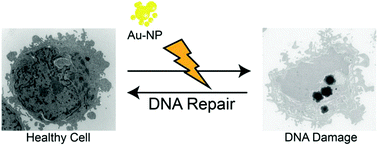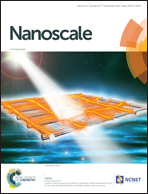Transient DNA damage following exposure to gold nanoparticles†
Abstract
Due to their interesting physicochemical properties, gold nanoparticles (Au-NPs) are the focus of increasing attention in the field of biomedicine and are under consideration for use in drug delivery and bioimaging, or as radiosensitizers and nano-based vaccines. Thorough evaluation of the genotoxic potential of Au-NPs is required, since damage to the genome can remain undetected in standard hazard assessments. Available genotoxicity data is either limited or contradictory. Here, we examined the influence of three surface modified 3–4 nm Au-NPs on human A549 cells, according to the reactive oxygen species (ROS) paradigm. After 24 h of Au-NP treatment, nanoparticles were taken up by cells as agglomerates; however, no influence on cell viability or inflammation was detected. No increase in ROS production was observed by H2-DCF assay; however, intracellular glutathione levels reduced over time, indicating oxidative stress. All three types of Au-NPs induced DNA damage, as detected by alkaline comet assay. The strongest genotoxic effect was observed for positively charged Au-NP I. Further analysis of Au-NP I by neutral comet assay, fluorimetric detection of alkaline DNA unwinding assay, and γH2AX staining, revealed that the induced DNA lesions were predominantly alkali-labile sites. As highly controlled repair mechanisms have evolved to remove a wide range of DNA lesions with great efficiency, it is important to focus on both acute cyto- and genotoxicity, alongside post-treatment effects and DNA repair. We demonstrate that Au-NP-induced DNA damage is largely repaired over time, indicating that the observed damage is of transient nature.

- This article is part of the themed collection: International Year of the Periodic Table: Precious metals for cancer treatment


 Please wait while we load your content...
Please wait while we load your content...